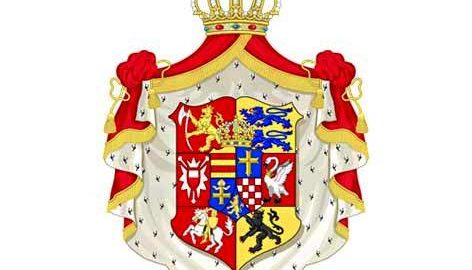

Previously, we read about the Stamps of Grand Duchy of Baden. In this blog, we are going to familiarize ourselves to the stamps of another set of rarely known stamps. The stamps of the Grand Duchy of Oldenburg or commonly known as the Stamps of Oldenburg. Before we move on towards the stamps, it is necessary to know more about this Duchy.
Named after its capital (the town of Oldenburg), the Grand Duchy of Oldenburg was a state in the north-west of present-day Germany. Oldenburg survived from 1180 until 1810 when it was annexed by First French Empire. The Ruling family if Oldenburg i.e. the House of Oldenburg, came to rule in Denmark, Norway, Sweden, Greece, and Russia. In 1871, Oldenburg joined the German Empire. In 1893, a canal was built, connecting the city of Oldenburg to the North Sea, and as a result, the city became a commercial center of great economic importance. In 1918, the Duchy became a Free State within the Weimar Republic. Prior to the North German Confederation, German States stamps were issued by most of the separate Germanic kingdoms, duchies, free-cities, etc. of Northern Europe. Stamps of Oldenburg are a handful. Only 25 stamps were issued between the period of 1852 and 1868. Stamps of Oldenburg are a testimony to the changing history of the Postage of Oldenburg as well as of the country.
The first stamps of Oldenburg were issued in the year 1852 and were issued until the year 1855. These stamps were imperforate and manufactured using the lithography technique on colored paper. The common design features the Arms of Oldenburg above a center tablet containing the denomination. Major varieties of the stamps are as follows:
1/3 Sgr – Black on Green
1/30 Thaler – Black on Blue
1/15 Thaler – Black on Rose
1/10 Thaler – Black on Yellow
The next set of the stamps of Oldenburg was issued on July 10, 1859. Like the first issue, these stamps are also imperforate and manufactured using the lithography technique on colored paper. These new designs were larger and a little more ornate, featuring a crown over the Arms of Oldenburg in the center, while the name of the duchy and the denominations are on ribbons at the top and bottom of each stamp. These stamps also have denomination numerals at the sides. Major varieties of the stamps are as follows:
1/3 Groschen – Black on Green
01 Groschen – Black on Blue
02 Groschen – Black on Rose
03 Groschen – Black on Yellow
On 1st January 1861, a new set of six stamps were issued with the same design of a crown over the Arms of Oldenburg in the center with the name of the duchy and the denominations on ribbons at the top and bottom. These new stamps were issued with new denominations and colors. Major varieties are given as follows:
1/4 Groschen – Orange
1/3 Groschen – Green
1/2 Groschen – Reddish Brown
01 Groschen – Blue
02 Groschen – Red
03 Groschen – Yellow
The stamps of Oldenburg received a make-over in the year 1862. Between the years 1862 and 1867, a new design of the stamps of Oldenburg was introduced. These news stamps were bicolor, perforated and were embossed over white paper. The stamps depict the colored coat of arms in the center with an oval vignette which is inscribed with the name of the country in the obverse and the denomination in words at the bottom. The denomination numeral is seen between the two inscriptions. Major varieties are given as follows:
1/3 Groschen – Green.
1/2 Groschen – Orange.
01 Groschen – Rose.
02 Groschen – Ultramarine.
03 Groschen – Bister.
These stamps are pretty rare, as they are less in numbers. Forgeries and fake cancellations are numerous of these issues. At the beginning of 1868, the stamps of the Grand Duchy of Oldenburg were replaced by those of the North German Confederation.
Image Courtesy:
https://colnect.com and https://www.stamp-collecting-world.com
The Mintage World Team comprises of experts, researchers and writers from the field of Philately, Notaphily and Numismatics who try to shed light on some of the most interesting aspects of coins, banknotes and stamps from not just India but across the globe as well.